Terri Herman-Poncé's Blog: Terri Herman-Ponce, page 4
February 5, 2017
The Groundhog Conspiracy
I bet you think he’s cute. Cuddly. Innocent, even.
But he’s messing with our minds, I tell you.
[image error]
copyright National Geographic
Every year, on February 2, the United States goes through this thing called Groundhog Day. It’s supposed to be a cute way of determining if we’re going to get another six weeks of Winter or if we’re going to see an early Spring, and it’s all based on whether or not the groundhog sees his shadow.
It’s a conspiracy, I tell you.
Why, you ask? Well, this is why:
If a groundhog sees his shadow in one city or state, but doesn’t see it in another city or state, what did he see, exactly? Something? Nothing?
And what does that mean, then? More Winter? Early Spring? Would I have to move somewhere else if I wanted more Winter or an earlier Spring?
And what if I don’t want to move?
More than that, what if the groundhog in my hometown is wrong? Or lying to me? Or worse, just telling me what I want to hear? Or telling me what I don’t?
This is too much for me to comprehend. I have enough in my life to fret over and think about and rationalize, and the fact that I have to add this to my already long list of worries is too much. I mean, seriously. How do we know these groundhogs aren’t chatting away behind the scenes, on a level we don’t understand, all with the goal of messing with our minds? And I bet it sounds something like this:
“Okay, Joe. You’re not going to see your shadow. But Mike, you are.”
“But what about Nancy? She hasn’t been out of her burrow in a long time.”
“You’re right. Someone get Nancy and tell her she’s gotta make a show of it. She’ll see her shadow, and so will Dan, Ann, and Vicki.”
“You realize we have more groundhogs that will see their shadow than those that won’t, right?”
“Good point. Okay, you four — Ben, Frank, Rosa, and Gina — you’re with Joe. You’re not going to see your shadow. We’re an even split now. That’ll show those stupid humans. All we want to do is sleep, and every year they yank us out of our warm beds, put us on display before those things they call cameras, and mock our livelihoods. I’m sick of it.”
“You know that splitting us down the middle like that won’t stop humans from doing this every year, don’t you?”
“Yeah, but it’s fun to mess with them anyway. Remember that time Roger bit that Wisconsin Mayor? We gotta get ourselves more of that.”
So the groundhog sees his shadow. Or doesn’t. And then everyone gets happy when they know Spring will come early (even though some of us get hit hard with Springtime blizzards). Or people bitch and moan that we’re getting another six weeks of winter, only to live through the warmest season ever.
You should know that Punxsutawney Phil has been doing this for 120 years (well, not Phil, but Phil and his descendants, because that would be one super old groundhog and, besides, I don’t think they live that long). So far, he’s “predicted 103 forecasts of more winter and 17 early springs. (There are nine years without any records, and even the Punxsutawney Area Chamber of Commerce, which keeps track of these things, doesn’t know what happened to Phil during those years.) Data from the Stormfax Almanac’s data shows that Phil’s six-week prognostications have been correct about 39% of the time.”
But what do you expect? These are groundhogs after all. And, for some reason, we continue to listen to them.
It’s an evil, sinister conspiracy, I tell you. 
January 29, 2017
When One Door Closes, A Windmill Can Often Be Found
There’s been a lot going on lately. For me personally, but also for many others on a national and global level. But this is the thing about life: change is inevitable and it’s something you can’t avoid. Sometimes change is uncomfortable. Other times it’s downright scary. And often it can make you feel as if you have no control.
[image error]
Lately, I’ve been thinking more about private life changes of my own, and the public life changes many others around me are experiencing. Often, change is viewed as a personal affront, an attack on one’s beliefs or way of life, or a sense of being picked on or singled out. It can also feel like you’re not being heard or, worse, don’t matter.
Barring extreme circumstances, change usually isn’t personal. It’s how you view it that makes it personal.
I’ve been studying mindfulness and meditation for a while now, and in doing so I’ve rediscovered something very important about change that I’d forgotten: that when one door closes, another one always opens eventually. However, getting bogged down in regret, or in rear view mirror thinking, can make it difficult to find that other window, which only comes with Acceptance.
Acceptance, like change, can also be misunderstood.
Acceptance isn’t cowering; it’s allowing strong emotions to surface and then letting the mind and heart process what’s fueling those emotions.
Acceptance isn’t giving up or giving in; it’s understanding that you can bend and flex just as a tree does under a powerful storm, knowing you’ll stand tall again once the tumult has passed.
Acceptance is empowerment – to make new change. To take charge with renewed focus. To let go of the very thing that was bringing you down and making you lose your way, and to embrace a new way of thinking and being and living instead. It’s about welcoming that newly opened door with gusto and fervor and positivity.
This is a powerful and formidable position to be in.
The beauty of writing today’s blog was that it served two purposes: one, to remind me of the mindfulness of change and a new and alternate open door ahead of me (even if I haven’t found it yet). And two, to share with you some things I’ve learned along the way–for when you feel like change is too much, too powerful, or just too strange to comprehend:
Accept change with compassion. This means being compassionate with yourself as you experience the change. This also means forgiving yourself for when you feel angry toward yourself, or even others. You may become short-tempered or impatient. You may fight any information that seems to go against your mindset or psychological grain. When this happens, accept that it’s a normal reaction. Recognize that it’s okay to feel that way, that it’s simply your mind and heart’s way of protecting you, and then release the negativity. Envision it as a cloud that dissipates overhead, or a balloon that rises and loses air until it completely disappears. Take in a deep breath, and move on.
Accept the grief, and the anger. Humans are emotional beings. That means an uncomfortable situation will bring forth many feelings, and the more uncomfortable the situation, the stronger the feelings that go with it. This is also normal, and you will progress through the stages of loss as you come to terms with change. You will experience denial, and anger, and bargaining, and depression, and finally acceptance. Let yourself go through it all. Only then will you discover that newly opened door. Fight it, and it’ll never see the light of day.
Change can feel like you’ve lost something. But most often it’s a new beginning. Humans love, and rely on, routine. We get up at the same time, we go to the same job, we do the same exercise routines. Ask a person to change an eating behavior because it’s healthier, or tell them they have to move to another state, and suddenly even the most even-keeled person will fight the very thing they have to change—even if it’s better for them. When that happens, recognize the loss but also recognize that with loss comes new opportunity and new adventure.
Understand that reactionary behavior won’t solve anything. The temptation to bark at someone who doesn’t agree with you, or incessantly obsess about a perceived unfairness, is your psyche’s way of protecting you. Your brain is wired to take care of you. It warns you when danger is imminent, but it also likes to tell you internal stories that often aren’t true. Take the time to listen to those internal stories and recognize they’re just that: stories. Understand that listening to those internal monologues—and without questioning them—are what fire up emotion and can make you do something you may regret later.
Use change as an opportunity to learn. About yourself. About other people. About different ways of viewing life or doing things. Growth is the only way we learn about ourselves. Same thing with challenge. If life stayed the same, it would become very boring. We’d also never know what we’re truly capable of.
Use change as an opportunity to do something new. Once you realize that change is an opportunity to learn, you also discover that it’s a chance to try things differently. A new career. A new place to live. A new group of people to become friends with. A reason to become an activist, or a teacher, or a student—many life possibilities suddenly become available to you once you open your eyes to new experiences. It can be very enlightening, and enriching. It can also make things better than they were before.
Challenge the notion that feeling down, or feeling down and out, doesn’t define you. Change offers a new way of seeing and experiencing things. It also provides an opportunity to grow stronger and better, if only you embrace it. Once you embrace it, you arm yourself to become something more than you were before. Someone who can make a difference, find a true passion, support a worthy cause, or embrace a life lesson that you can take forward and maybe share with others.
Open yourself to the idea that there is no right way or wrong way, only the way that’s best for you. Change is challenge, yes, but it’s also different for everyone. And that difference is what prompts growth for all of us, if we’re only open to accepting the challenge to begin with.
There is an old Chinese proverb about change:
“When the winds of change are blowing,
some people are building shelters and others are building windmills.”
So go build a windmill. Then watch all the wonderful things that happen when you do it.
Have anything else to add? I’d love to hear it.
Namaste.
Copyright © 2012-2017 · All Rights Reserved · TerriPonce.com
Filed under: Stories Behind The Stories Tagged: acceptance, change, life lessons, meditation, mindfulness, Self Awareness, Self Esteem, self improvement








January 22, 2017
When the Passion Fades (aka, when authors fall out of love with their characters)
I’m going to let readers in on another little secret about authors…
Sometimes, writers fall out of love with their characters. Much like a real life romance, things authors used to love about certain characters can often become a-n-n-o-y-i-n-g. Especially for those who write series, like me.
[image error]
Source: Unknown
When authors start writing a book, especially one with new characters, there’s an excitement about the new relationship. You’re in love. You can’t get enough of these new people in your life. You want to spend every moment with them, from the time you open your eyes in the morning to the time you shut them at night…and even into your dreams. Like budding real life relationships, you want to learn everything you can about your characters and you think their idiosyncrasies are just so damned cute! The spontaneity of this fresh relationship fuels creativity and sparks storytelling. You become imaginative and carefree and willing to risk everything to get these people onto the page. You feel passion, and you have energy and vigor. You’re in lust.
Then time passes and reality sets in. The in love stage gives way to the reality stage, and the demands of writing the story stomp all over the carefree affair an author’s been having with one or all of their characters. The cute things a character used to do now bother you. Stagnation sets in, and like a couple who’s been together a long time, the author sits and stares at this person they’ve created on the page and wonders, “What happened to us? We used to be so happy!”
This is me. Or was, anyway, for the past six months. Those who know me know I’ve had a very long-term love affair with David Bellotti from my Past Life Series. I’ve been writing him for, oh, six years now, and I’ve known him for even longer. But sometime around the middle of 2016, something happened to our relationship. His desire to control situations stood at odds with my desire to control situations. His noble trait of never telling lies took a turn when he decided to start lying to the people he loved, and even me. His drive and single-mindedness and ambition started to become overbearing. He kept trying to tell me what he wanted, and I’d stopped listening. I kept trying to tell him what I wanted, and he’d stopped listening.
We both threw our hands up in frustration.
Then one day, while I was writing David and staring at his photo on my laptop and he was staring back at me, we realized we had a problem. I’d been forcing him into doing things he didn’t want to do and he was fighting back. Neither of us was happy. And we either had to deal with the problem at hand or risk ruining what had been, until then, a beautiful relationship. Worse, we were at risk of ruining the yet-to-be-completed story and the Past Life Series along with it.
A hard decision had to be made. Stay in the same old rut and placing blame, or take responsibility for what had happened to the relationship and find a middle ground where we could fix the damage
The solution came from a very strange, but also very real life, place: couples therapy.
It was the first time in my writing career that my book research took me someplace so personal. However, I learned a few things during this process of “relationship repair” using some great advice I found online:
Think how not what. In one therapist’s words, “process always trumps content”. This is another way of saying that when emotions heat up, the problem is the emotions and not what the argument is really about. I discovered I was arguing with David over my frustrations in having lost his voice. He was arguing over his frustration in not being heard. Once I accepted I had to fix my emotion–the anger over what was happening–and walk away until I’d settled down, well, only then could I focus on what he was trying to tell me. David wanted the freedom to explore new sides of his personality, to test boundaries and see what else he was capable of, and nothing more. I’d just been too emotional to hear him.
Think of problems as bad solutions. I discovered that what I thought was the problem was actually masking another problem underneath. So instead of asking David why he was pissed off at me and continually shutting down on me, I asked, “What concerns you about how I’m writing you now? Help me understand why you decided to withdraw and lie.” This was a far cry from what I had been doing before, which was to accuse him of being angry and bully him into telling me why. Once I did that, once I released all expectations of what I thought he’d say, I got the truth. David simply wanted to make his own decisions and not be told what to do.
Look ahead. The more I thought about it, the more I realized I was focusing on all the things that went well for us in the past, but that weren’t going well now. Knowing I had an eye on the rear view mirror, I decided to switch my focus to the road ahead and visualize what I wanted this book, and this series, to look like. Then I asked David what he wanted to see in the future as well. It turned out we both wanted the same thing, and David and I now have a game plan for how we’re going to get there.
Keep the mystery alive. Even though David is a product of my imagination, I don’t know everything about him. But I’d been trying too hard to do just that, to learn everything there was to know so I could write stronger, more conflict-driven scenes. Turns out that was a bad thing because the more I did it, the more David withdrew. But once I let go, once I realized personal mystery was A Good Thing, I also realized that mystery would lend itself to the page and strengthen my story organically.
I’m happy to say that David and I have reinvigorated our author/character relationship and that it’s now better than it had been. Stronger, deeper, and more realistic.
Funny how real life can so easily superimpose itself onto the fictional world. Even more funny how the fictional world can help you learn more about yourself. 
January 8, 2017
Happy New Year! (Ancient Egyptian Style)
There are a lot of ways to celebrate the New Year, and many of them involve parties. Well, the ancient Egyptians were big party animals themselves, and they had their own way of celebrating the New Year, too — which they called Wepet-renpet or “Opening of the Year”.
Ancient Egyptian festivals centered on processionals that took place on land and river, and were celebrated on particular days or series of days in the official year. Their New Year was no different from ours. Except…
[image error]
Wep-Renpet (Mesore) in ancient Egyptian hieroglyphics
The ancient Egyptian New Year wasn’t January 1st. Instead, their New Year corresponded to the Nile’s annual flood. The Egyptian New Year was predicted when Sirius, the brightest star in the night sky, first became visible after a 70-day absence. This usually happened around mid-July just before the annual inundation of the Nile River, which ensured farmlands remained fertile for the coming year.
They viewed their New Year as potentially their last. The Egyptian civil calendar consisted of 360 days, with five days added to the end to make up for the calendar slipping one-quarter day a year. These five transitional days were considered dangerous because the goddess Sekhmet controlled 12 demonic murderers, who travelled the earth shooting arrows from their mouths and causing plague. To protect themselves, the ancients performed rituals and wore charms around their necks to pacify Sekhmet and protect themselves from her wrath.
[image error]
They partied. Hard. When the sun rose New Year’s Day, the ancient Egyptians knew Ra had defeated his enemies and was reborn again, so they got trashed in celebration. They imbibed in beer, wine, fish, figs, geese, pork, duck, beef, pastries, honey cakes, bread, lotus flowers (which has hallucinogenic properties), dancing, singing…and sex. Lots and lots of sex.
It was a “Festival of Drunkenness”. Discoveries at the Temple of Mut showed that during the reign of Hatshepsut, the first month of the ancient Egyptian year was time for a PAR-TAY. This massive party was tied to the myth of the war goddess Sekhmet, who was tricked into drinking herself unconscious by Ra and preventing her from killing humanity.
[image error]
So, do any of your parties resemble anything here? I’d like to know.
December 11, 2016
Christmas Books – Great Reads, Great Gifts
I love this time of the year. I love the cold and snow and warm winter mittens, and I love the warmth and love and giving that the holiday season brings.
I also love Christmas stories, but there are so many to choose from. Still, there’s something to be said for curling up by a fire with family to read a classic, or sitting alone and in peaceful silence with a Christmas tale you’ve never read before, or finding an unexpected life lesson in a holiday novella.
So, as my gift to you, I’ve pulled together an eclectic mix of Christmas reads you can give as a gift…or keep for yourself. (click on the images to hyperlink to the book)
With this blog post, I’m signing off for the season. Merry Christmas, Happy Holidays, and Happy New Year!!!
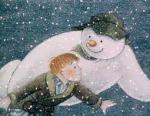 The Snowman (Raymond Briggs)
The Snowman (Raymond Briggs)
A little boy rushes out into the wintry day to build a snowman, which comes alive in his dreams that night.
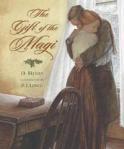 The Gift of the Magi (O. Henry)
The Gift of the Magi (O. Henry)
A sentimental story with a moral lesson about gift-giving.
A Christmas Carol (Charles Dickens)
Written by one of England’s greatest and most popular novelists, this story has come to epitomize the true meaning of Christmas.
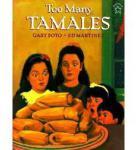 Too Many Tamales (Gary Soto and Ed Martinez)
Too Many Tamales (Gary Soto and Ed Martinez)
Christmas Eve started out so perfectly for Maria. Snow had fallen and the streets glittered. Maria’s favorite cousins were coming over and she got to help make the tamales for Christmas dinner. It was almost too good to be true when her mother left the kitchen for a moment and Maria got to try on her beautiful diamond ring . . .
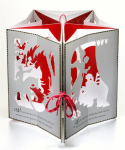 The First Noel: A Christmas Carousel (Jan Pienkowski)
The First Noel: A Christmas Carousel (Jan Pienkowski)
Part carousel, part shadow box, this elegant, stand-alone Nativity book, designed by a master paper engineer, reflects all the wonder of Christmas and will be treasured for seasons to come.
 The Polar Express (Chris Van Allsburg)
The Polar Express (Chris Van Allsburg)
A young boy, lying awake one Christmas Eve, is welcomed aboard a magical trip to the North Pole.
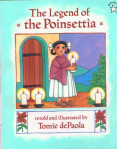 The Legend of the Poinsettia (Tomie dePaola)
The Legend of the Poinsettia (Tomie dePaola)
This Mexican legend tells how the poinsettia came to be, through a little girl’s unselfish gift to the Christ Child.
 Madeline’s Christmas (Ludwig Bemelmans)
Madeline’s Christmas (Ludwig Bemelmans)
Something is not right with the famous “twelve little girls in two straight lines.” All are sick in bed except brave Madeline, who must run the school, for even Miss Clavel is not feeling very well. But when Madeline finds help from a magical merchant, the girls embark on a Christmas journey that will surely make them forget their sniffles and sneezes.
 Holidays on Ice (David Sedaris)
Holidays on Ice (David Sedaris)
Once the kids are in bed, put a bit of Baileys in that hot chocolate and curl up with this hilarious collection of holiday stories by humorist Sedaris — he’ll make your own family look a little saner by comparison.
 The Snow Queen (Hans Christian Andersen)
The Snow Queen (Hans Christian Andersen)
When a boy is cursed with an inability to perceive goodness, a young girl must go on a lonely quest to restore his heart and vision and free him from captivity in the palace of the Snow Queen. A classic tale of the power of love to conquer even the chilliest hearts.
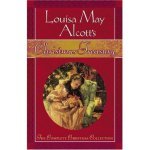 Christmas Treasury (Louisa May Alcott)
Christmas Treasury (Louisa May Alcott)
Readers of all ages will cherish these fifteen enchanting tales filled with hope, sorrow, faith, joy, redemption, strength, and goodness from the author of Little Women.
 The Christmas Train (David Baldacci)
The Christmas Train (David Baldacci)
On a train ride to Los Angeles, cash-strapped journalist Tom Langdon encounters a ridiculous cast of characters, unexpected romance, and an avalanche that changes everyone’s Christmas plans.
The Faber Book of Christmas (Simon Rae)
The history of Christmas across the world that you might not have heard about. Best not to ask what’s for Christmas lunch on the 19th century American Emigrant trail.
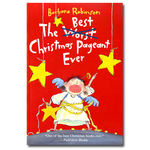 The Best Christmas Pageant Ever (Barbara Robinson)
The Best Christmas Pageant Ever (Barbara Robinson)
The Herdmans are the worst kids in the history of the world. They lie, steal, smoke cigars, swear, and hit little kids. So no one is prepared when this outlaw family invades church one Sunday and decides to take over the annual Christmas pageant. None of the Herdmans has ever heard the Christmas story before. Their interpretation of the tale has a lot of people up in arms. But it will make this year’s pageant the most unusual anyone has seen and, just possibly, the best one ever.
Copyright © 2012-2016 · All Rights Reserved · TerriPonce.com
Filed under: Stories Behind The Stories Tagged: Christmas Books, Christmas gifts, Christmas reading, Christmas Stories








December 4, 2016
Unique Holiday Gifts for Readers
It’s that time of year again — a time for joy and merriment and, yep, the sometimes challenging gift quest for loved ones on your Holiday shopping list.
As an author, I’m a sucker for any present that has anything to do with writing or reading. But even I sometimes get bored with the usual, ho-hum Amazon or B&N gift cards, or Kindles and e-readers jam-packed with already downloaded books and novellas and non-fiction material. Yeah, it’s nice and all that, because a reader can never have enough books. But still, sometimes a reader really wants a gift that’s truly outside the box. Or the book.
So, I researched the internet to find unique reading-related gifts that might put a bookish twinkle in your giftee’s eye. Click on the images to access the websites.
 Book Lovers Throw Blankets
Book Lovers Throw Blankets
Cafe Press has a wonderful assortment of blankets that readers can cozy up with, all designed with the book lover in mind. And, as of this posting, new visitors to Cafe Press can get 25% off their first purchase.
 Book-Shaped Plates
Book-Shaped Plates
Gone Reading has really cute dishware in the shape of books. From cups and saucers to plates and platters, you can get anything for the reader on your list. And as of this posting, if you sign up for their newsletter you’ll get 10% off your first purchase. Oh, and the dishes are dishwasher, oven, and microwave safe.
Banned Book Socks
These socks showcase once-banned titles on one sock and censored/strike-throughs on the other.
 Pride and Prejudice Pillow
Pride and Prejudice Pillow
A novel touch (pun intended!) for a bed or sofa or comfy chair. The hyperlink on the photo will bring you to all sorts of options. Have fun browsing!
 New York Times Custom Birthday Book
New York Times Custom Birthday Book
This compilation chronicles “all the news that’s fit to print,” featuring the front page of the newspaper from the day you were born, and from every birthday thereafter.
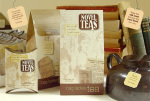 Novel Teas
Novel Teas
Tea bags individually tagged with literary quotes from around the world.
 Literary Rebel Mug
Literary Rebel Mug
Like the Banned Books Socks, this mug boldly displays the title of some of the world’s most famous banned books, from Galileo’s Dialogo to Rushdie’s Satanic Verses and 22 titles in between. Holds 12 oz.
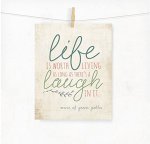 “Life Is Worth Living As Long As There’s A Laugh In It”
“Life Is Worth Living As Long As There’s A Laugh In It”
Literary inspiration from Anne of Green Gables, for your wall.
 Enchanted Library Candle
Enchanted Library Candle
With aromas of vanilla, parchment, honey and coffee beans, the Enchanted Library soy wax candle provides a feeling of contentment similar to that of being surrounded by shelves filled with books.
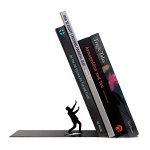 THE END Book Ends
THE END Book Ends
Created by Fred & Friends and called “The End”, it says just that: the books look like they’ll fall on the small man who tries to save his life.
HAPPY GIFT HUNTING!
Copyright © 2012-2016 · All Rights Reserved · TerriPonce.com
Filed under: Stories Behind The Stories Tagged: book gifts, book lovers, Christmas gifts, holiday gifts, readers, reading gifts, unique gifts








November 20, 2016
10 Archaeological Mysteries We May Never Solve
The more we learn about our past, the more we discover just how much we don’t know. As we continue to dig up history and uncover where we came from and who we were as a people, we realize there are things about our history we will never understand. Much of that comes from the fact that what was created in our past — traces of culture and religions and beliefs — were meant for that specific time. Because we can only make educated guesses about what that meant, we may never truly understand everything about our history.
I found a terrific blog about 10 archaeological mysteries we may never solve (yes, I’m a sucker for this kind of stuff, as you can tell from other posts on my site). Even though this particular blog was posted two years ago, its content still makes you sit up and wonder.
Here are those mysteries:
The Paracas Candelabra
It’s close to the Nazca Lines but it wasn’t built by the Nazca. Why it was built is the biggest mystery.
The Uffington White Horse
From the Neolithic period? Or not?
The Liber Linteus Zagrabiensis
A long lost and very old language that predates much of what we know, found on a linen used to wrap an ancient Egyptian mummy.
White Shaman Rock
An ancient lost religion from an ancient culture in the Americas, dating back more than 4,000 years.
The Sajama Lines Sajama has possibly tens of thousands of different lines, some up to 11 miles long. They’re 15 times larger than the Nazca Lines, and possibly prehistoric.
Sajama has possibly tens of thousands of different lines, some up to 11 miles long. They’re 15 times larger than the Nazca Lines, and possibly prehistoric.
The Tartaria Tablets
If genuine, these tablets predate other discovered written forms of writing by 2,000 years, making them 5,500 years old.
The Blythe Geoglyphs
Their scope wasn’t known until they were discovered from the air in 1932, and represent two creator deities in the Mojave culture.
The Death of Alexander the Great
Foul play? Illness? Something else? And his death was foretold by the Chaldeans, who warned him he would die if he entered Babylon.
The Minaret of Jam
The remains of the lost city of Firozkoh?
The Emerald Tablet
It doesn’t exist anymore and we don’t know its author, origin, and location. We don’t even know what it looked like. But it’s documented in ancient texts.
Want to read more about these fascinating mysteries? Click here. It’ll take you to the site that did all the hard investigative work I showcased here. Enjoy the speculation.
November 13, 2016
Personal Lessons We Can Learn from the Recent Election
This week’s U.S. election polarized our nation. It exposed a big divide in mentality — in hopes and dreams and expectations. For some, the results triggered happiness. For others, dread and fear.
I’m not going to talk politics in this blog. I never will. I will, however, talk about what we can learn from a dynamic, oppositional, and sometimes antagonistic campaign that drew attention to two very critical elements of being human: our desire to be right, and the feelings of helplessness that can arise when you realize there is only so much you control.
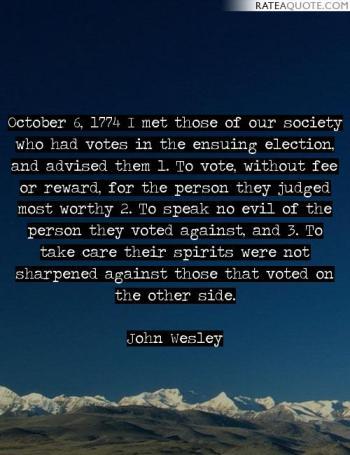
It’s easy to forget that the meaning we give to our experiences determines the quality of our life. Good or bad, satisfying or troubling, positive or negative, our view of what happens to us colors how we will feel about it — and the way we will live our life. We can grouse and grumble and argue that what happened was the worst thing ever to happen. We can puff up chests and counter-argue that the country was overdue for change. We can also encourage positivity and fulfillment and even trust in a higher good, something bigger than all of us.
This isn’t always an easy thing to do, especially when you are feeling dismissed or that you didn’t get your way. That the other person, or event, or situation is wrong. It’s also easy to forget when you’re feeling high on the hog, when you feel as if you’ve “won” or “beaten the opposition”. However, there are two sides to every coin, as they say, and a bad flip or good flip is all about perception. This doesn’t just apply to elections. It applies to everything we face.
You can sit there and think neener-neener, you’re such a sore loser. Or you can sit there and complain. Neither attitude gets us anywhere. Neither makes you, as a person, feel good. But more importantly, neither makes you right.
You can take the attitude of asking, “Why are the Clinton supporters complaining so much?” Or, you can try to see that we all have opinions and wants and needs, and that they are equally important even if they don’t align with yours.
You can take the attitude of asking, “How could those people have voted for Trump? This is terrible!” Or, you can try to open your heart to an experience you may not be prepared for or want, but that you can learn from anyway. Something you can take down to a personal level, to make life better individually.
The only way to do this is to truly explore the messages and inner chatter we tell ourselves. Our views are just that: our views. What’s inside our heads isn’t in the heads of others. It can’t be. No one else occupies your head and heart and soul except you. But when you take a step back and accept that we can only control our reactions and responses and decisions, and not those of others, you’ll find yourself in a much more empowering place. You’ll also discover compassion you didn’t know existed. What happens in life isn’t about being right or wrong. It’s about finding commonalities even in the midst of our biggest differences and trials and tribulations. It’s about finding compassion, and always trying to do the right thing.
It’s the only way to a more peaceful existence. Together.
Namaste.
On a side note, I always encourage comments on this blog. However, I reserve the right to delete any confrontational posts that don’t promote peace, compassion, or mindfulness. You have been warned.
November 6, 2016
The Challenging Art of the Book Blurb
Most of my blog posts are for my readers and fans and folks who just like to see what I’m up to. Today’s blog is more for the writers out there, but I’m certainly not going to turn you away if you aren’t one.
October 23, 2016
Can We Stop the Apostrophe Madness?
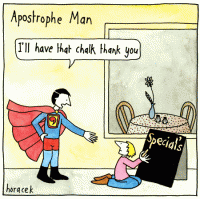
copyright Monte Mendoza | flickr
I’m about to lose my mind. Seriously.
I’ve talked about this on my blog before, but I just can’t let this go. Nope. I just can’t.
It probably comes from being a writer, but all this apostrophe madness is making me Nuts. Yes. With a capital ‘N’.
What is apostrophe madness, you say? Well, it’s this:
It’s isn’t Its, and Its isn’t It’s. It’s with an apostrophe is a contraction and is the short form for it is or it has. Its without an apostrophe is the possessive pronoun of it. Examples:
It’s
It’s raining outside. (Because you can say It is raining outside.)
I think it’s a terrible idea. (Because you can say I think it is a terrible idea.)
Oh man, it’s been a long day. (Because you can say Oh man, it has been a long day.)
Its
The cat ate its food. (Because you can’t say The cat ate it is food.)
The tree loses its leaves in the Fall. (Because you can’t say The tree loses it is leaves in the Fall.)
If you are talking about plurals (nouns that are more than one), no apostrophe is needed. Examples:
Grills for sale. (NOT Grill’s for sale).
I brought candles to the party. (NOT I brought candle’s to the party.)
Temperature highs for today will be cooler than normal. (NOT Temperature high’s for today will be cooler than normal.)
Acronyms don’t use an apostrophe either, with one exception. According to the Chicago Manual of Style, “If you can stop thinking of the spelled-out meaning of the acronym and just treat the acronym itself as a word with its own meaning, you should be able to add that little s without fretting.” So read this carefully:
IOUs (not IOU’s)
MDs (not MD’s)
RFPs (not RFP’s)
The exception? If you have an acronym with periods, you’d use the apostrophe. In these cases having no apostrophe would look confusing because a period is normally viewed as the end of a sentence:
P.A.’s (not C.P.A.s)
M.D.’s (not M.D.s)
C.C.J.’s (not C.C.J.s)
First names that are plural don’t use an apostrophe. EVER. EVER. EVER. Names signify a noun, and pluralized nouns don’t use an apostrophe. Period. (I threw in a funny there. Did you catch it?). If your first name ends in “s, x, z, ch, sh”, you add an “es”. Examples:
How many Annas are in your class? (NOT How many Anna’s are in your class?)
There are a lot of Mikes in the world. (NOT There are a lot of Mike’s in the world.)
I know three Riches at work. (NOT I know three Rich’s at work.)
Last names that are plural don’t use an apostrophe. EVER. EVER. EVER. And if your last name ends in “s, x, z, ch, sh”, you add an “es”. Examples:
Merry Christmas from the Millers. (NOT Merry Christmas from the Miller’s.)
Happy New Year from the Joneses. (NOT Happy New Year from the Jones’s.)
The Kennedys are hosting a party! (NOT The Kennedy’s are hosting a party!)
Brand names don’t use an apostrophe if you’re talking about more than one. Examples:
The plural of the Blackberry phone, for example, would be Blackberrys and NOT Blackberry’s.
Likewise, you’d say, “I have two iPads” and NOT “I have two iPad’s”.
And Victoria’s Secret really had a winner with Body, which would pluralize like this: Victoria’s Secret was showing off its Bodys (NOT Body’s).
(And we won’t get into certain company trademarks here, a la Apple, which specify how the public is supposed to really pluralize their product – because people just don’t speak that way.)






